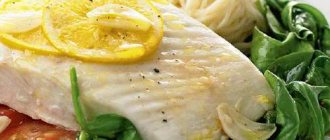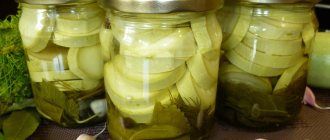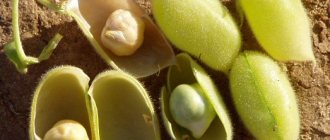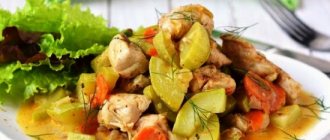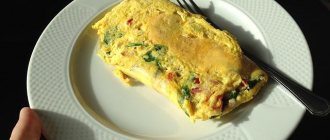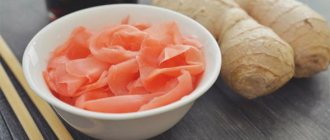The baby is growing up, and his mother’s milk - so tasty and nutritious - is no longer enough for him. When it comes to introducing the first complementary foods, one of the dishes popular with pediatricians and children's nutritionists is zucchini puree for babies. It is this vegetable that has properties that are so suitable to allow it to become the first independent food of a small child.
Zucchini is a hypoallergenic product, it stimulates digestion, does not cause bloating, and prevents constipation. Zucchini is also rich in microelements and vitamins, such as:
- Iron;
- Potassium;
- Phosphorus;
- Magnesium;
- Vitamin C;
- B vitamins.
Zucchini is quick and easy to prepare, which will appeal to any mother who knows the value of every minute of free time. Of course, you can buy zucchini puree for babies, packaged in jars, in the children's section of the store, but many mothers prepare it at home on their own. Some people are not sure about the cleanliness of the production process, some people feel sorry for paying a lot of money for multi-colored jars, and some people have an excess of zucchini in their garden. Some mothers simply like to prepare food for their child themselves.
Zucchini puree - general principles and methods of preparation
Zucchini puree is present in the diet of both infants - from 5-6 months, and children over one year old. The method of preparing it is very simple - the vegetable is boiled and ground. Very young children are given complementary foods in their pure form, or they can dilute the puree with milk or formula. Older children are introduced with additional ingredients - butter or vegetable oil, sugar, semolina, yolk or finely chopped greens. Puree is prepared either from zucchini alone or with the addition of potatoes, carrots, cottage cheese, apples, and bananas.
Zucchini puree - food preparation
Vegetables intended for feeding a child must be taken only fresh, without damage. Both zucchini and regular young zucchini will do. They are cleaned and the seeds are removed.
Very often in recipes for children it is recommended to boil vegetables by steaming, rather than in water, to better preserve nutrients. If you don't have a steamer among your kitchen utensils, that's okay. You can build it yourself. Pour a quarter of the water into a regular saucepan, place a colander on the top rim and place the vegetables in it. The water will begin to boil, steam will rise and the vegetables will steam in a colander until cooked. To make things go faster, the pan must be covered with a lid.
If the zucchini is not boiled by steam, but in water, then they are immersed in boiling water. It is not poured very much - it should just cover them.
If the vegetables were not grown on your own plot, but were purchased at the market or in a store, they should be soaked before cooking. It is better to leave potatoes in water overnight; for other vegetables, including zucchini, soaking is enough for two hours. During this time, pesticides and other harmful substances have time to come out of them.
Zucchini puree - the best recipes
Subtleties of cooking technology
Cook the zucchini for no more than 10 minutes; the remaining broth can be diluted with the finished puree.
How long to cook zucchini for first feeding?
- In water – no more than 10 minutes
- For a couple – 15-20 minutes.
How to cook zucchini for first feeding?
In the pan:
Place the fruit cut into medium pieces in a small saucepan and fill them with water so that it barely covers the pieces.
In the steamer:
In accordance with the instructions for the device, vegetables are laid out in an even layer in the steamer bowl in the “cooking vegetables” mode.
In the slow cooker:
Vegetables are placed in a special bowl for steaming in an even layer, the bowl is placed on a special stand in the multicooker.
In a steaming pan:
Pour some boiling water into the pan and place a steamer insert in the pan. There should be enough water so that it is just below the level of the steamer
, - this way the vegetables will be steamed rather than boiled in water.
Recipe 1: Zucchini puree for children under one year old
The dish is prepared quickly. To add additional flavor or achieve a thinner consistency, the finished puree can be diluted with breast milk or formula. There is no need to salt it.
Ingredients : half or a third of zucchini, water
Cooking method
Cut the zucchini pulp into small cubes and boil until soft for 7-10 minutes. Grind the vegetables in a blender or rub through a sieve. Then boil the mixture for about two minutes on the stove and cool.
Recipe 2: Zucchini puree with semolina
The diet of children over one year old already contains products such as semolina and butter, so their menu can be diversified with a new dish. If your baby has allergies, you can replace milk with water, semolina with rice flour (grind the rice in a blender), and sugar with fructose (sold in the store).
Ingredients : one third of a small zucchini, 1 tsp. semolina and sugar, 1 yolk and half a glass of milk.
Cooking method
Peel the zucchini and chop finely (into 1x1 cm cubes). Mix milk with yolk, sugar and semolina and pour this mixture over the zucchini.
If you have a double boiler, multicooker or pressure cooker, you can use their help by setting the “steam” mode and cook for about 20 minutes.
You can do it differently - place the zucchini with the egg-milk mixture in a small glass jar (0.5 l or less). Next, pour a little water into a regular saucepan (as for sterilization when canning). Place a cloth on the bottom and place a jar of zucchini, cook until soft.
And one more option: boil the zucchini with the remaining ingredients in a saucepan in the most usual way over low heat. In this case, you should always be nearby, stirring the contents so that it does not burn.
Grind the finished mixture with a blender; when serving, you can put a small piece of butter (5 g) on a plate.
How to cook? Healthy recipes
Preparing zucchini for your baby is quick and easy. The vegetable is peeled and seeds removed, washed, cut into pieces and boiled in a small amount of water until soft.
You can check readiness with a fork or knife. The zucchini should be easy to pierce, not fall apart or turn into something when pressed.
Cooking time depends on the degree of ripeness of the fruit and the size of the pieces. If the vegetable is young, it will be ready 5-7 minutes after the water boils. Ripe fruit may need 15 minutes or more. The boiled vegetable is pureed using a blender or mashed with a fork.
There are many different healthy zucchini dishes. You can make puree, casserole, and cutlets from this vegetable.
Puree
Classic zucchini puree is an ideal option for baby's first complementary foods. To prepare it, use about 100 grams of vegetables. The fruit is peeled and cut into small cubes. Dip into water and cook until tender. Grind in a blender until pureed.
If the mass is too thick, then it should be diluted with expressed breast milk or an adapted formula. From 7- it is allowed to add a little to the baby’s puree.
This increases the beneficial properties of the dish.
You can make a little puree from zucchini and apples. Products must be peeled and seeds removed and cut into slices.
Pour a glass of water into the multicooker. Place pieces of fruit and vegetables in a steamer basket. Select the “steaming” mode and set the time for 15 minutes. You can simply boil the ingredients in a pan of water. The finished ingredients should be transferred to a blender container and blended until smooth.
Tender vegetable puree. To prepare it you will need half a zucchini and carrots, two medium potato tubers, a teaspoon of olive oil. Vegetables need to be peeled, washed, cut into pieces and boiled for 20 minutes. Combine the finished ingredients and beat with a blender or rub with a spoon through a sieve. Fill with oil.
Zucchini puree
For a child over 9, you can prepare a dish from zucchini and either. You will need one young vegetable, 50 g of meat and 3 ml of vegetable oil. The zucchini needs to be peeled and seeded, cut into pieces, filled with water and put on fire.
Separately boil the poultry fillet. Combine the finished ingredients and bring them with a blender to a homogeneous puree. Add vegetable oil and stir.
Soup
Soups for complementary feeding are worth it after getting acquainted with vegetables. They are prepared from those products that are well accepted by the child’s body. Recipes for tasty and healthy soups for children are given in the table.
Zucchini cream soup
| Name | Ingredients | Cooking algorithm |
| Zucchini and cauliflower soup |
| Boil the vegetables until tender. Remove them from the water and grind them with a blender or mash with a fork. Dilute with broth to desired consistency. Add butter and stir. |
| Puree soup of zucchini, carrots and potatoes |
| Peel the vegetables, rinse and cut into pieces. Place a saucepan with water on the fire. When the liquid boils, you should lower the carrots, and then the potatoes and zucchini. At the end add chopped herbs. Let the soup brew for half an hour. Remove the vegetables and puree them in a blender. Dilute with broth to desired consistency. Add vegetable oil and stir. |
Casserole
For children over one year old, you can prepare zucchini casserole. You will need a medium-sized vegetable, 150 g, one, some fresh herbs. The cereal should be thoroughly washed and boiled.
Chop the greens. Peel the zucchini and remove seeds and grate it on a fine grater. Add rice and herbs to it. Beat in the egg. Add salt and mix. Grease the frying pan with butter.
Pour in the mixture and smooth it out with a spoon. Place in the oven for 25-35 minutes.
Vegetable cutlets
You can prepare vegetable cutlets for your baby. You will need carrots, cauliflower, zucchini, green peas and semolina in equal parts. Vegetables should be washed, peeled and chopped in a blender. Add semolina and add salt. Wait about 15-20 minutes until the cereal swells. Form cutlets, roll them in flour and steam for about 5-7 minutes.
Recipe 4: Zucchini puree with apple
Almost every child will like this puree. Any variety of apples is suitable for it. If the apples are sour, you can add a little sugar (1 teaspoon) to the mixture. Or soften the taste of the puree with a couple of spoons of cream or milk. If your child is allergic, it is better to take yellow or green apples.
Ingredients : half a zucchini, 1 apple.
Cooking method
Peel the zucchini and apple and cut into cubes. First remove the seed from the apples. It is better to cut out the core with a margin so that you don’t accidentally end up with bones or rough films in the puree. Boil the vegetables separately, because... Their cooking times are different, the apple softens faster. Combine the boiled vegetables, grind (in a blender or on a sieve) and bring to a boil.
Recipe 5: Zucchini puree with pumpkin
Pumpkin gives this puree a unique flavor. If it is prepared for a baby under one year old, the amount of oil should be reduced or completely eliminated. There is no need to add salt or sugar; pumpkin adds natural sweetness to the dish. But if the baby is capricious and you can’t do without sugar, you can add a teaspoon.
Ingredients : half a zucchini, a small piece of pumpkin (100-150 g), a glass of milk, butter - 50 g.
Cooking method
Cut the peeled pumpkin and zucchini into cubes or slices, pour in milk and boil until soft. Grind the prepared vegetables. If the puree turns out to be thick, it can be diluted with the remaining vegetable broth. Boil. Add butter to the puree, cool until warm and serve.
Beneficial features
Children should be given zucchini puree as their first meal at the age of 4 months. The vegetable product is easily digestible and is not an allergen. Zucchini is a healthy vegetable because it contains a number of nutrients necessary for the growth and development of a child. This vegetable product helps eliminate any allergic reactions caused by other vegetables or fruits. Potassium and sodium contained in zucchini have a beneficial effect on the immune and nervous system of the baby.
We recommend reading: The most important thing about constant runny nose and sneezing: the main reasons, how to treat
The main benefit of the vegetable is the presence of vitamin C in it, which helps protect babies from colds. Zucchini puree is an excellent remedy for constipation; taking it normalizes digestion and eliminates colic. Zucchini is a light food that does not overload the stomach. The benefit of pectins is excellent absorption and removal of excess fluid from the body.
Despite the variety of zucchini varieties, the white-fruited variety is better suited for babies first. And since the children's diet excludes the use of salt and sugar, these components should not be added to zucchini puree - it itself has a pleasant sweetish taste.
Zucchini puree - useful tips from experienced chefs
To prepare meals for children from fresh vegetables all year round, they can be prepared for future use. To do this, peeled zucchini (or other vegetables) must be cut into small pieces, placed in small portions in plastic bags and frozen.
Thanks to vegetables, the child receives nutritious carbohydrates, as well as a number of vitamins. The fiber and pectins contained in them help remove harmful elements from the body. When the baby is not gaining weight well, the pediatrician may recommend porridge as the first complementary food, but the option with vegetable puree is suitable for children with digestive problems, especially for those who have constipation.
Why is zucchini considered optimal for first feeding? It is easy to prepare, delicate in taste, and the possibility of allergies from it is minimal, but we will talk about this later. A large amount of nutrients helps make the baby healthier. Sometimes children under one year old develop physiological anemia, and zucchini helps cure it.
Complementary feeding is a very important process in a baby’s life. And the first dishes recommended for feeding small children are vegetable purees, for example from zucchini
How to freeze for the winter
It’s good if the time for complementary feeding falls during autumn, which is generous with vegetables. For winter and spring, it is better to prepare zucchini in advance than to later buy those grown using nitrates. However, they need to be prepared correctly. Freezing is best.
For this purpose, young, strong zucchini or small sized zucchini are required.
- Wash, peel, and cut into small pieces.
- Let the vegetables dry and place them in special freezer bags or simple plastic bags.
- We put it in the refrigerator.
The child's menu should be varied and healthy.
All of these recipes have been tried and approved by picky foodie moms. Rate this article:
Benefits of zucchini
It is ideal to start complementary feeding with zucchini, because it has a wonderful effect on the body, thanks to the following beneficial characteristics:
- The puree is well accepted by the child’s body, helps improve digestion, preventing constipation, and also protects the baby from possible bloating and colic.
- Hypoallergenic product. Allergic reactions are extremely rare.
- Zucchini contains a whole range of vitamins and microelements necessary for the full development of the baby. Among others, there are magnesium and phosphorus, iron and potassium, as well as vitamins B and C.
The positive aspects of the vegetable do not end there:
- ease of preparation: even a novice housewife can handle the recipes;
- low price for the product in the summer;
- fresh frozen product can be introduced at any time of the year;
- It cooks very quickly, which means mom saves a lot of time.
Zucchini has beneficial properties that are necessary for a child, and the vegetable is hypoallergenic, which is important when feeding for the first time.
Rules for introducing complementary foods
Vegetable purees appear in the diet of infants closer to six months, if the child is breastfed, and after 4 months, if the baby eats formula. Let us recall the basic entry rules:
- the puree must be one-component, homogenized, without salt and sugar;
- It is better to give the sample in the morning (at about 11:00) or at lunch (about 14:00);
- first complementary feeding - then breastfeeding or an adapted formula;
- the first dose is small - from 0.5 to 1 teaspoon, after a week the dose will gradually increase to 50 grams; as a result, by the age of 7 months the baby should eat up to 100 g, and closer to the age of 150 g per day;
- if the baby does not want to eat, try feeding the product a week later or offer another vegetable for introduction, after consulting with your pediatrician;
- You should not conduct taste experiments if it is too hot outside or the child is not feeling well - the attempt is unlikely to be successful.
When introducing complementary foods with zucchini, it is extremely important to know when to stop. If you notice a child has a wonderful appetite and a desire to eat more, you should not do this. How much should you give in the end? Give strictly the prescribed dose, otherwise you may get digestive problems.
Before you start giving your baby complementary foods, consult your pediatrician, he will suggest the correct feeding schedule for your baby (for more details, see the article: complementary feeding for infants)
Food diary - taking care of your child
It’s a good idea to keep a food diary where you will record all your baby’s reactions to a new product:
- bloating;
- redness or rashes on the skin;
- restlessness, moodiness;
- bowel dysfunction or gas formation.
If you notice some of the above signs, you should stop introducing complementary foods and consult your doctor. He will tell you when to start introducing food again. Most likely this will not be earlier than a month. When introducing new purees, it is advisable to choose one-component options, i.e. those in which only one vegetable is present. A mixture of vegetables or fruits will make it difficult to identify the “culprit” of poor health or allergies.
When, having bought a product at the market and subsequently prepared it yourself at home, you notice redness or rashes on the skin, then perhaps you should replace the homemade version with canned purees or use frozen vegetables for cooking. We will talk further about all possible manipulations and methods for preparing zucchini.
Choose only young vegetables for complementary feeding (more details in the article: which vegetables are good for complementary feeding?). But it’s better to buy zucchini from friends or grow it yourself
Contraindications for use
Another possible reaction after eating zucchini is the appearance of flaking on the skin. This reaction is absolutely natural and has nothing to do with allergies. To prevent this, mix the zucchini puree with a small amount of water in which the zucchini was boiled or add a little breast milk. Excessive peeling can be shown to a doctor and you can get qualified advice on this matter.
Restrictions on using zucchini
Due to the cultivation technology, zucchini, especially early ones, are vegetables with a medium-high nitrate content. In infant nutrition, the main rules are the gradual introduction of foods, the naturalness and purity of the food composition. Therefore, it is advisable to remove nitrates from zucchini.
A convenient way is to soak the zucchini in a 1% salt solution. Wash the zucchini, peel it, cut it into pieces and leave it in a saline solution for 1.5 hours. Afterwards we put it in a colander, rinse it with water and use it for its intended purpose.
*Cook's Advice
During the summer, when there is an abundance of zucchini in vegetable gardens and markets, you can freeze already soaked vegetables in portions to use in the winter in a varied menu for your grown-up baby - soups, sautés, vegetable sauce for porridge or meat.
This is another convenient property of zucchini. They are easily combined with other vegetables and meat. In the future, the diet for babies may include zucchini and potato puree, carrot and zucchini puree, and minced meat with zucchini.
You should switch to purees made from several components gradually, devoting approximately 5-7 days to each new product. This way it will become clear whether the baby tolerates each of the products well, and how to make a compound puree from several components.
*Cook's Advice
There is important information to remember about potatoes that have been stored for a long time, have sprouted or turned green: they accumulate a dangerous compound - solanine. Most solanine accumulates under the skin.
An exclusionary approach to infant nutrition makes sense: do not use green or sprouted “old” potatoes at all. Where an adult can risk cutting off the skin very thickly when peeling old potatoes, a helpless child should not take the risk.
When deciding to completely abandon overwintered potatoes in anticipation of a new harvest, look for a wealth of alternatives in porridges - oatmeal, buckwheat, corn, rice.
Heat treatment of zucchini, and then grinding them into puree is the basis of all methods of preparing puree that are available to modern mothers.
Zucchini can be boiled, baked in the oven, or steamed in a slow cooker.
It will take us no more than 25 minutes to prepare fresh puree. And these minutes will have to be spent again and again, since the puree for each meal must be fresh.
How to Make Zucchini Puree on the Stove
- Wash and clean the zucchini. Remove the core with large seeds.
- Cut into large cubes.
- Place in a saucepan and pour boiling water one finger above the level of the zucchini. Clean drinking water should be used.
- Cook for 15 minutes until the zucchini softens.
- Grind the zucchini in a blender until smooth. Or rub through a sieve.
By the age of 9-11 months, as the baby teethes, it will be necessary to chop less thoroughly, for example, knead with a fork.
If the puree is too thick, you can dilute it with boiling water or the water in which the zucchini was cooked. You should not use water from the zucchini if you did not soak the zucchini before cooking. After all, it is into the water that most nitrates go into cooking vegetables.
Zucchini puree for babies in a slow cooker
After repeating the steps of soaking, peeling and cutting, we can puree zucchini in a slow cooker.
- To do this, use the “steaming” mode, setting the time to 10 minutes.
- We grind in any available way, adequate to the number of teeth the child has.
How many events happen in just 6 months of a person’s life! Our children have time to learn to roll over and crawl, try to sit or sit confidently, remember their closest relatives and choose their first favorite toys. They will join the family with that touching miracle, without which it will become impossible to imagine their life. If your choice for starting complementary feeding is zucchini puree for your baby, then let this recipe bring maximum benefit to your wonderful baby!
When the time comes for the baby to introduce adult food, young mothers ask themselves the question: “how to prepare zucchini for the baby’s first feeding.” Due to its beneficial qualities, pediatricians recommend introducing this vegetable first.
Product selection and preparation
The most reliable method of preparation is to make your own puree from your own vegetables, grown on your own plot, and then boiled or steamed at home. What if a baby born in the summer has to try his first complementary foods in the winter? You can find a fresh product in stores, but most likely it will be an imported version. It may contain nitrates and other harmful substances.
Zucchini keeps well in the freezer. In the same way, you can save any other vegetables for your baby.
Solutions in this case may be as follows:
- Freeze fresh vegetables for the winter ahead of time. Buy fresh green young vegetables (you can take greenhouse varieties), their length should not exceed 20 cm. Tender pulp will allow you to easily remove the seeds. When choosing, keep in mind that the surface should be smooth, slightly shiny, without spots or other irregularities. It is advisable to buy from a trusted seller.
- Jar puree. Any product on the shelves of children's stores is certified. In this case, the most important thing is to read the composition. Ideal composition: zucchini and water. It is advisable to avoid “pear-shaped zucchini” in a number of ingredients. It is an analogy of pumpkin, which means it is not suitable for the very first complementary feeding due to a possible allergic reaction.
It is not recommended to combine zucchini with milk. At least 6 hours should pass between taking these two products. To combine with zucchini, choose meat protein, vegetable fats (olive oil), other vegetables and herbs.
When purchasing zucchini baby food, read the product ingredients. There should be nothing there except the vegetable itself and water
How about a frozen version?
Young summer fruits cannot be stored for a long time, due to the fact that their peel is very thin and there is a lot of water inside. Large zucchini with thick skin fit well, but are less suitable for feeding children. Their structure is coarser, and their nutritional value is reduced compared to young fruits. That is why freezing young vegetables is an ideal option for the winter. You can do it like this:
- Wash the vegetables thoroughly and cut the skin as thin as possible.
- Remove the top and also the stalk. They can be a place where nitrates live.
- There is no need to remove the middle, so just cut the zucchini into small circles. Their thickness should be about 3 cm. Then place them in a freezer bag in one layer.
Vitamin C retains its nutritional properties when frozen, but it is still better to resort to the quick freezing option. First, you should set the freezer to the lowest setting, wait about an hour, and then put the cups of vegetables in the freezer. Remaining time in the freezer is 1 hour. After freezing, you can return to your usual temperature levels.
When planning to cook, do not wait for the zucchini to defrost. If you do the opposite, you will end up with only a mushy consistency, but not zucchini at all. To cook, place the frozen vegetable in water and cook for about 5-7 minutes. Once the zucchini is cooked, grind it using a sieve. You can choose any cooking option that suits you: steamed or in a slow cooker. The quality and usefulness of the product will not be affected.
Do not prepare a lot of zucchini puree, as for the first samples of the vegetable you only need a spoonful of the finished product
conclusions
Zucchini is the best product to start introducing your baby to adult food. It’s better to prepare it yourself; puree for the first feeding can only contain zucchini itself
and water and/or breast milk.
It is imperative to achieve a liquid consistency and uniformity of the finished product. Complementary foods should be introduced in small amounts
and be sure to carefully monitor the child’s condition.
This video clearly shows how to prepare the first complementary foods from fresh and frozen zucchini for a child.
During infancy, there are still not many types of foods that can be given to babies, so it is important to know about each of them. Pureed zucchini is one of these dishes, and it will be discussed in this article.
The baby grows and develops quickly. And very soon he no longer has enough breast milk. With sufficient breastfeeding, the first complementary foods are offered to the baby only at 6 months. But modern children are often on artificial nutrition, in this case it is recommended to introduce puree earlier - already at 4.5 - 5 months. These terms are also valid for infants with slight weight loss.
You need to start with vegetable purees, since after sweeter fruit purees the child often refuses healthy vegetables. Children's nutritionists and pediatricians recommend using zucchini puree as one of the first complementary foods.
Its hypoallergenicity, easy digestibility and saturation with microelements are very important properties of a baby's first independent food. In addition, zucchini prevents constipation, stimulates digestion, and does not cause discomfort or bloating.
It contains such useful vitamins and microelements as: potassium, iron, magnesium, phosphorus, vitamin C and a number of B vitamins.
Any mother will love the ease and speed of preparing this dish.
At first, it is allowed to give the baby only one-component puree. The size of the first serving should not exceed 0.5 - 1 teaspoon. It is necessary to give complementary foods in the morning so that it is possible to monitor the reaction of the child’s body. If everything is in order, the dose should be increased gradually every day.
How to make zucchini puree for babies
Zucchini puree can be made from fresh or frozen vegetables. Undoubtedly, a freshly harvested crop contains more useful substances, but in winter, frozen preparations are quite suitable.
It doesn’t matter what type of zucchini the dish will consist of. The main thing is that the vegetables do not have defects, cracks or marks from impacts. It is better to choose small young zucchini.
They must be washed thoroughly before cooking. It is recommended to soak store-bought vegetables in cool water with added salt. The soaking process lasts approximately 2 hours.
Then you need to peel the zucchini, remove the core and cut the vegetable into cubes or bars.
The preparations are cooked for approximately 15 - 20 minutes. There are other faster cooking methods: in a double boiler or slow cooker. In this case, the cooking time is reduced to 10 minutes. Some mothers prefer to bake zucchini in foil in the oven.
The vegetable becomes soft, now it is crushed in any way (blender, rubbed through a sieve, etc.). If the resulting puree is too thick, you can dilute it with vegetable broth, milk mixture or sunflower oil.
The finished mass can be placed in sterilized jars, then they must be sterilized for 15 minutes and rolled up. In any other case, zucchini puree cannot be stored for a long time; it must be prepared fresh each time.
During prolonged heat treatment, some beneficial vitamins and substances are lost. Therefore, in winter it is preferable to use frozen vegetables. For these purposes, the zucchini is peeled, cut into pieces and frozen.
Zucchini puree for a child, prepared by the caring hands of a mother, is without a doubt healthier than its canned counterpart.
An infant who feeds on mother's milk does not feel the need for additional complementary feeding until 6 months. Six months after birth, the baby will need to cook soups and prepare vegetable purees, since the baby’s body will no longer have enough mother’s milk. During this period, according to many pediatricians, the best first complementary food is zucchini, pureed. But how long should this vegetable be cooked and how to prepare it so that all the beneficial substances are preserved in it and the dish is tasty and appetizing? Today we will consider an important problem for young mothers: how to prepare zucchini for the first feeding of a child
.
Preparation options for first feeding
Before cooking, it is important to properly process the product:
- Wash the vegetable in cool running water.
- When preparing puree for a child of the first year of life, you need to remove the skin and rinse again with water.
- Having purchased the product in a store or market, you need to soak the vegetables for about 2 hours in cold water with salt. To do this, you first need to cut each fruit in half. These manipulations are done in order to get rid of possible nitrates.
How to cook zucchini for your favorite little one? We will give you some simple and delicious recipes. All of them are simple and accessible.
In a saucepan
- You need to cook with filtered or purchased clean water. Boil some water.
- Cut the zucchini into cubes and place in boiling water. Boil for about 10 minutes until tender.
- The prepared vegetables should be ground in a blender, or even better, then pass the puree through a sieve, so the consistency will become even nicer and more uniform. Add some vegetable broth.
You should not cook for long, 10 minutes is the maximum. Excessively long cooking will lead to the loss of valuable vitamin C. The measured time period is optimal for preserving all the usefulness of the vegetable.
In a slow cooker
- Peel the fruit and remove the seeds, then cut into rings.
- Place the chopped pieces into the slow cooker.
- To start cooking, you need to press the corresponding button on the panel (“Stewing” or “Steaming”). Set the process time to 10 minutes.
- The method for chopping zucchini was indicated above or you can use any other option convenient for you.
For a couple
Steaming is possible using a simple pan:
- Pour water into the pan, about ¼ of the volume, and place a sieve or colander on top.
- Washed, peeled and seeded, the fruits should be placed in a sieve.
- Boiling water will provide the steam needed for cooking. Such a simple device ultimately copes with its task no worse than a double boiler.
- To make the process go faster, it is better to cover the vegetables with a lid.
Zucchini puree for babies is the beginning of a new “adult” life for your little one. A healthy vegetable not only introduces the baby to the food of mom and dad, but also gives a lot of useful nutrients that are so necessary for active growth and development. With its help, you can show the taste beauty of food, but do not overdo it. Do not put pressure on the baby when feeding. Approaching the age of 1 year, your baby will master many more new dishes. Do not forget to listen to the advice of doctors so that the process of accustoming to new things is pleasant and comfortable for the baby.
Probably, only the lazy in our time have not seen the recommendation that the first complementary foods should start with zucchini.
And so, the child has grown up and you also decided to start feeding your baby.
How to prepare zucchini for the first feeding, secrets of preparation, benefits of the product for the baby and possible contraindications - we’ll talk about this today.
What's the best way to cook zucchini for young children?
As you can see, there are a lot of ways to prepare zucchini for babies, but which one is optimal?
Pediatricians and nutritionists agree that steamed vegetables are the healthiest. This method of cooking preserves almost all the nutrients and beneficial substances in the zucchini. In addition, the vegetable remains tender, but not watery.
When cooking in a pan and baking, the temperature of the zucchini is too high, so that almost all the vitamins disappear from it. This is especially true for vitamin C - it is most sensitive to heat treatment.
Of course, this does not mean that you cannot boil zucchini in the standard way. It will still retain some of the nutrients, but there will simply be significantly less of them than with steaming.
- Choose only young fruits for your baby; otherwise, you must peel the zucchini and remove the seeds.
- If there are dents on the surface of the zucchini, it is necessary to cut out at least 1 centimeter of the pulp in this place to prevent harmful substances from entering the finished dish.
- Before cooking, the chopped pulp should be kept in water for half an hour - this will remove all pesticides from it.
- Do not overcook the vegetable - this will destroy all the beneficial substances in it.
- When adding cow's milk, remember that this product is introduced into complementary foods much later than 6 months, so for very young children, puree is prepared only with water.
- Zucchini should be stored in the refrigerator. Here they retain their freshness for 3-4 days. It is better not to freeze zucchini - the vegetable loses its taste and the child will most likely refuse it.
- To steam zucchini, you need to warm up the steamer and at the same time prepare the vegetables. Having cut them into cubes, you need to place everything in a small bowl, pour a little milk or water into it, and also sprinkle semolina on top of the zucchini. We put the bowl in a double boiler and cook for half an hour, after which we blend everything until smooth with a blender.
Now, knowing how much to cook zucchini for a child, you can prepare complete baby food at home. The main advantage of this method is that you can be sure that what you have in front of you is a completely natural and fresh food.
For several generations now, the rules of complementary feeding have remained unchanged in their main essence - the age of the baby to take the first solid food and the choice of foods. So, modern young mothers also use their grandmother’s recipe for zucchini puree for babies when the time comes to expand the baby’s acquaintance with the rich human diet. Let's find out all the methods and subtleties of preparing this dish, and what nuances can be taken into account when using it at the beginning of complementary feeding.
Even 10 years ago, it was believed that formula-fed babies and children with severe underweight may need complementary feeding from 4 months.
However, modern pediatrics is increasingly equalizing the age of onset of complementary feeding for formula-fed children due to the widespread use of highly adapted artificial formulas. Therefore, on average, the first “adult” dish appears on the table of our babies starting from 6 months, regardless of the method of feeding before that.
There are most often three options for this dish: a fermented milk product, fruit or vegetable puree from 1 ingredient. And this is where zucchini comes into the picture - a favorite vegetable of the Slavic peoples, which combines many benefits for infant nutrition.
- Zucchini is not overloaded with beneficial nutrients, contains a lot of organic water, a small number of calories and a small amount of rough fiber.
- Vitamin C, B vitamins, potassium, iron, phosphorus and magnesium - that’s the whole delicate list of a light vegetable.
And zucchini is light not only in its composition! The speed of preparing vegetable puree from zucchini for babies is an invaluable property during the complementary feeding period, because in the cycle of new worries for young mothers, every free minute counts.
The benefits of zucchini for a child
Why is this particular vegetable recommended for a child’s first introduction to foods?
- Zucchini practically does not cause allergies;
- Has a general strengthening property;
- Promotes good digestion;
- Strengthens intestinal perilstatics;
- Zucchini juice has a diuretic effect, which helps normalize the water-salt balance in the body;
- Potassium, which is found in its composition, is responsible for the normal rhythm of the heart and the balance of water in the child’s body. In addition, it has an excellent effect on the condition of nerve and muscle fibers, optimizes cerebral blood supply;
- Thanks to its beneficial substances, the product strengthens the baby's health. Zucchini contains many vitamins and microelements, such as potassium and phosphorus, magnesium and iron, as well as vitamins C and B:
- It is rich in copper and carotene, fiber and ascorbic acid.
Composition matters
It is clear that the benefits of zucchini are provided by the components included in its composition, and first of all it is worth noting potassium. It has long been proven that products rich in this component stimulate the functioning of the cardiovascular and nervous systems, and thanks to its unique ratio with sodium (100:1 ratio), it is possible to prevent the development of anemia and maintain the water balance necessary for normal life. Knowing how to prepare zucchini puree for infants, you can ensure normal functioning of the whole body, improve brain nutrition, protect against harmful radicals, and prevent excess weight gain.
How and when to introduce zucchini into complementary foods
Everything, of course, greatly depends on the complementary feeding system you choose.
- In traditional complementary feeding, if you haven’t read anything else yet and only listened to a pediatrician about this, then zucchini is the first vegetable that your child will become familiar with;
- You should start introducing complementary foods to your baby no earlier than 6 months. This is a recommendation for an infant;
- It happens that the introduction of complementary foods can begin later if the child does not yet show his readiness for it.
For more information about the signs of readiness for complementary feeding, see the free online seminar, which can be subscribed to by clicking on the link Main mistakes when introducing complementary feeding>>>
How to introduce zucchini into complementary foods so as not to harm the baby and so that he likes it?
- The first time you need to give the child puree on the tip of a teaspoon;
- You can mix it with breast milk, but it is better to simply put the baby to the breast immediately after he swallows this portion of zucchini. The effect will be even more beneficial;
- Wait for the next day and look at the child’s reaction:
- Leather;
- Chair;
- Behavior
All these factors will show you whether you should give zucchini today or whether you need to pause in complementary feeding.
Regarding the volume of complementary foods, you can find the following information: if there is no negative reaction to the product, then the portion can be doubled. Then it is necessary to increase the amount of complementary feeding and bring it to 50-60 g per day, and at 7-8 months the child should already be eating 70 g. Closer to a year, reach 100 g.
We remember that the task of complementary feeding from 6 to 9 months is to introduce the child to various products, textures and check for allergenicity.
By giving a large amount of complementary foods at once, you will kill the child’s food interest and he will refuse any food.
I explain in more detail about all the mistakes of complementary feeding and how to introduce it correctly so as not to upset the child’s stomach and spoil the child’s appetite in the online course ABC of complementary feeding>>>.
Attention! If after the first spoonful of zucchini puree, the child has changes in his stool or a rash appears on the skin, then the product should be immediately discontinued and try giving it again in a few weeks.
There are certain rules for introducing complementary foods:
- the puree should only be from zucchini;
- first give puree, and then breast milk;
- the vegetable is cooked right before eating;
- it can simply be boiled, baked or steamed;
- It is better to give complementary foods in the morning;
- The consistency of the puree should be liquid and at room temperature;
- if the child does not want to eat, do not force it;
- if the baby does not feel well, then do not give the product on this day;
- If you notice an allergic reaction, temporarily postpone complementary feeding.
When should you not give puree to your child?
There is practically no allergy from a white vegetable, but you still need to be careful. Feeding zucchini should be stopped immediately if you notice in your child:
- bloating;
- rash and redness on the skin;
- anxiety;
- increased gas formation and stool disturbance.
If such signs occur, then your child is allergic to zucchini and you should immediately stop feeding.
Try introducing it again in a month.
Important! If you add other vegetables to the zucchini puree, it will be very difficult to understand what caused the allergic reaction.
If you bought the product at the market or in a store, prepared the puree yourself, and your baby developed a rash on the skin, then try making it from a different zucchini. The reaction may not be so much to the zucchini as to the chemicals it contains.


